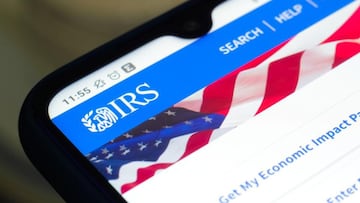What is IRS TREAS 310 and how is it related to 2022 tax returns?
The IRS has been hard at work processing 2022 tax returns issuing close to 70 million refunds so far. Here’s how to watch out for your direct deposit.

The 2023 tax season got off to its official start 23 January and nearly three months later it’s wrapping up for the vast majority of US taxpayers. The deadline to submit tax forms and pay taxes owed arrives Tuesday 18 April with the exception of certain taxpayers in areas of states that were hit by severe weather events.
Those filers have been given an automatic extension ranging from 15 May to 16 October 2023. Anyone else that needs more time will have to apply for a six-month extension but any taxes owed to the IRS will still need to be paid by Tax Day.
However, the sooner you file your 2022 tax return, the sooner you can expect to receive a refund if you have one coming. Most Americans do, of the over 100 million processed tax declarations, nearly 70 percent have resulted in a refund as of 7 April.
According to the IRS, the average tax refund this year is currently $2,878, over nine percent less than last year, but that was to be expected. The agency warned that with temporary tax laws put into place during the pandemic coming to an end including stimulus payments and the expanded Child Tax Credit program that tax refunds would be smaller in 2023.
What is IRS TREAS 310 and how is it related to 2022 tax returns?
The majority of US filers now opt for direct deposit to receive their tax refund, 66 million have been issued so far by the IRS to the tune of $195 billion. However, not haveing to watch the mailbox for a physical check from the Treasury Department you might not recognize the payment into your account.
When you check your bank account you should look out for the transaction code “IRS TREAS 310″ with a description of “TAX REF.” This is the code used for refunds from a filed tax return, including an amended tax return or an IRS tax adjustment.
If you still haven’t claimed the enhanced 2021 Child Tax Credit you can search past statements for “IRS TREAS 310″ with a description of “CHILDCTC.” As well, if you want to check that you received the Economic Impact Payments (EIP) you should look for “IRS TREAS 310″ with a description of “TAXEIP1″, “TAXEIP2″ and/or “TAXEIP3.”
If you filed a tax return for the 2019 or 2020, you should have automatically received the payments. However, there are still 1.5 million people who have yet to claim a tax refund for 2019 according to the IRS. Those people can still claim the money that they are owed from that year, but time is running out before the Treasury will keep it. The median tax refund that year was almost $900.






